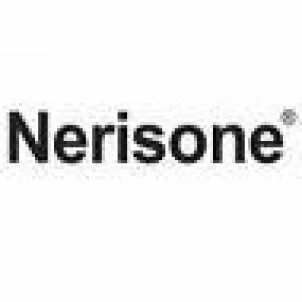Nerisone cream, 1 tube of 10gr.
 Click image to enlarge |
|
Description
NERISONE CREAM, OINTMENT, FATTY OINTMENT Corticoid skin preparations COMPOSITION 1 g Nerisone contains diflucortolone valerate (6alpha,9-difluoro-11beta-hydroxy-21-valeryloxy-16alpha-methyl-1,4-pregnadiene-3,20-dione) 1 mg. The cream contains methylparaben 0,07% and propylparaben 0,03%. PHARMACOLOGICAL CLASSIFICATION A. 13.4.1 Corticosteroids without anti-infective agents. PHARMACOLOGICAL ACTION Diflucortolone valerate is an effective corticoid. On topical application it suppresses inflammation in inflammatory and allergic skin conditions and ameliorates the subjective complaints, such as itching, burning and pain. Diflucortolone valerate is incorporated in three bases formulated to suit the respective skin condition. INDICATIONS All skin diseases which respond to topical corticoid therapy, eg contact dermatitis, contact eczema, occupational eczema; vulgar, nummular (microbial), degenerative and seborrhoeic eczema; dyshidrotic eczema; eczema in varicose syndrome (excluding ulcers); anal eczema; eczema in children; neurodermatitis (endogenous eczema, atopic dermatitis); psoriasis; lichen ruber planus et verrucosus; lupus erythematosus; first degree burns, sunburn, insect bites. CONTRA-INDICATIONS Tuberculous and syphilitic processes in the area to be treated, virus diseases (herpes simplex, vaccinia, varicella and smallpox). Potent topical corticosteroid preparations (Nerisone) should not be applied to any skin crease areas. Corticosteroids have been shown to be teratogenic in animals following dermal application. As these agents are absorbed percutaneously, teratogenicity following topical application cannot be excluded. Therefore Nerisone should not be used during pregnancy. DOSAGE AND DIRECTIONS FOR USE Unless otherwise prescribed by the doctor, the Nerisone preparation best suited to the skin condition is applied thinly twice or, perhaps, three times per day. Once the clinical picture has improved, one application per day usually suffices. Babies and children up to the age of 4 years should not be treated with Nerisone for longer than three weeks at the most - particularly not in the skin areas covered by nappies. Nerisone is available in three forms: Nerisone cream, Nerisone ointment and Nerisone fatty ointment. The form to be used in the individual case will depend on the appearance of the skin: Nerisone cream in weeping skin conditions, Nerisone ointment in skin conditions which are neither weeping nor very dry, and Nerisone fatty ointment in very dry skin conditions. Nerisone cream Nerisone cream is a highly aqueous and non-greasy preparation. In weeping skin conditions and moist areas of the skin it allows the secretions to drain away, thus providing for rapid subsidence and drying up of the skin. The cream is also suitable for use on exposed body areas (eg the face and the hands) and on hairy areas. Should Nerisone cream dry out the skin, Nerisone ointment or Nerisone fatty ointment, which contain more fat, should be used. Nerisone ointment Skin conditions which are neither weeping nor very dry require a base with balanced proportions of fat and water. Nerisone ointment makes the skin slightly greasy without retaining heat or fluid. Of the three different forms of Nerisone, the ointment has the widest range of use. Nerisone fatty ointment Very dry skin conditions and chronic stages demand an anhydrous fatty base. The occlusive effect of the Nerisone fatty ointment base promotes the healing process. Occlusive dressings An occlusive dressing may be called for in unusually refractory cases. When it is, it should be managed as follows: After application of the Nerisone preparation which the doctor considers to be appropriate, the area under treatment should be completely covered with a water-tight dressing which should then be fixed firmly all round to healthy skin by means of adhesive plaster. Plastic gloves can be used to occlude the hands. The dressing should be kept in place for as long as can be expected of the patient, but generally not for longer than 24 hours. If the occlusive treatment is expected to be prolonged, it is advisable to change the dressing every 12 hours. If an infection develops under the dressing, occlusive treatment must be terminated.
Reviews
Write Review
Your Review: Note: HTML is not translated!
Rating: Bad Good
Enter the code in the box below:
Are you serious about your health?
- Save Money - SAVE an additional 5% off every item.
- Save Time - Simplify your life with one less thing to remember.
- Never Run Out - Easy and reliable way to receive your items when you choose.

